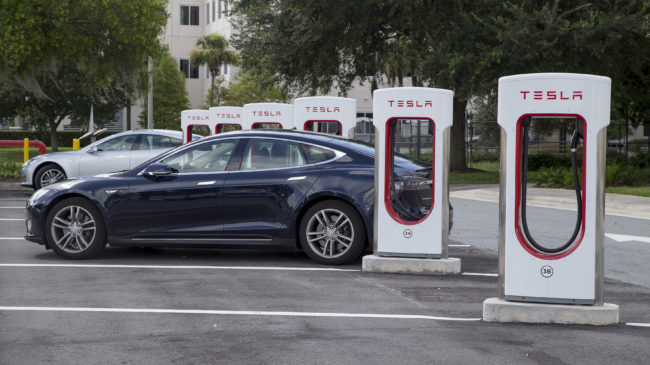Since 1978, the National Highway Traffic Safety Administration has promulgated “corporate average fuel economy” (CAFE) standards. Meanwhile, the California Air Resources Board (CARB) has, since 1990, employed its own low emission vehicle (LEV) standards, including zero-emission vehicle (ZEV) standards. Twelve other states and the District of Columbia subsequently adopted California’s LEV standards and nine of those adopted its ZEV standards.
The original CAFE standards sought to reduce U.S. dependence on foreign oil. While that remains one accepted purpose of current standards, the rationale has now largely shifted to reductions of emissions—especially those associated with climate change.
In 2012, NHTSA and the Environmental Protection Agency (EPA) issued a joint rulemaking for CAFE and GHG emission standards covering the period 2017–2021 and describing “augural” (i.e. intended) standards for 2022–2025. In 2018, EPA and NHTSA issued a proposal for revised standards for 2021 and new standards for 2022–2025 under the auspices of the proposed Safer Affordable Fuel-Efficient Vehicles rule (“SAFE” rule).
This is the fourth in a series of briefs published by Reason Foundation explaining and evaluating CAFE and ZEV standards. It incorporates lessons from those briefs and other studies that consider the overall effect of CAFE standards, as well as more recent work looking at revisions to federal CAFE and GHG standards under the proposed SAFE rule.
Fuel economy standards undoubtedly result in harmful distortions to markets, undermining choice and competition and leading overall to a reduction in beneficial innovation and economic growth. To the extent that reductions of various emissions (such as NOx and CO2) are desirable, there are more economically efficient ways to achieve these reductions, such as taxes and, even better, mileage-based user fees (MBUFs).
In terms of its effects on the economy, the SAFE rule thus represents a substantial improvement over the existing CAFE and GHG emission standards for MY 2017–2021 and an enormous improvement over the augural standards for 2022–2025. The rule will likely save consumers and manufacturers tens if not hundreds of billions of dollars, freeing up resources to be spent on innovation that will increase rates of economic growth and result in vehicles that consumers actually prefer.
Looking to the future, it seems likely that vehicle fuel economy will increase even without fuel economy standards, as vehicle manufacturers implement cost-effective improvements and respond to the felt needs of consumers, especially in the face of gas prices that are generally higher than during the late 1980s and 1990s.
In a study published in 2017, Kenneth Small used an adapted version of the National Energy Modeling System to estimate that if NHTSA and EPA were to leave the average CAFE requirement for light-duty vehicles (LDVs) at 33.7 mpg, the average fuel economy for new cars would rise from 36.7 mpg in 2015 to 41.7 mpg in 2025, while the fuel economy of new light trucks would rise from 27.3 mpg to 35.6 mpg over the same period.
In other words, the average fuel economy for new LDVs would rise to 38.9 miles per gallon (this is about 2 mpg more than the mandated increase in fuel economy under the proposed SAFE rule). Small assumed that the price of a gallon of gasoline would rise to $3.58 by 2025, which is lower than the $3.78 assumed by NHTSA and EPA in their 2012 rulemaking but higher than the $2.93 assumed in the SAFE rulemaking.
These findings are relevant because they suggest that if gas prices are higher than expected in the proposed SAFE rule, the fuel economy standards could cease to be binding, thereby reducing the costs they impose on society. It is difficult to predict the future of gasoline prices, but it seems clear that consumers and manufacturers adjust quickly to unexpected price changes, whereas mandated fuel economy standards run the risk of becoming either ineffectual or seriously harmful.
The Economic Consequences of Fuel Economy Standards
Related Research:
The Effect Of Corporate Average Fuel Economy Standards On Consumers
CAFE and ZEV Standards: Environmental Effects and Alternatives

